Photographs: Reuters Kanchana Suggu in New York
A Group of Ministers, headed by the Urban Development Minister Jaipal Reddy, is likely to be formed to address the issue of urbanization and manage this process successfully.
The issue of urbanization, if not addressed immediately, might lead to serious repercussions for major Indian cities and potential deterioration in quality of life, strain on resources and reduced investments in India's urban centres, according to a 21-month-long study conducted by the McKinsey Global Institute.
The report highlighted these risks as well as presented its recommendations on how they can be mitigated.
According to the study, 590 million people will live in cities by 2030, nearly twice the population of the United States today and approximately $1.2 trillion capital investment is required to meet the projected demand in India's cities.
. . .
India will need 7,400 km of metros, subways by 2030
Photographs: Reuters
2.5 billion sq mt of roads will have to be paved
In addition, the study projects that by 2030, 700-900 million square meters of commercial and residential space needs to be built (or a new Chicago every year as per the study); 2.5 billion square meters of roads will have to be paved and 7,400 km of metros and subways will need to be constructed (both, as the study highlights is 20 times the capacity added in the past decade).
And according to Shirish Sankhe, a director at McKinsey's Mumbai office, who co-authored the report and also recently met Prime Minister Manmohan Singh in this regard, it is indeed possible to transform cities in a decade.
In a recent presentation at the Asia Society in New York, Sankhe expressed that although he did not yet feel a sense of urgency from the government for the overall transformation of India's cities, several baby steps are being taken.
. . .
India will need 7,400 km of metros, subways by 2030
Photographs: Reuters
'Mumbai may spend $20 bn in 5 years on infra'
"Let's take the example of the city of Mumbai. In the last five years, they spent around $2 billion on urban infrastructure. In the next five years, they are likely to spend $20 billion, so it is a 10-time increase," says Sankhe.
"They are using a lot of recommendations that we highlight in the report to create this level of funding: land monetization, public private partnerships and central government viability gap funding," he adds.
According to MGI's projections, cities are likely to house 40 per cent of India's population by 2030 and that urban India will generate 70 per cent of India's GDP by then (up from almost evenly between urban and rural economies in 1995 and urban accounting for 58 per cent of overall GDP in 2008).
. . .
India will need 7,400 km of metros, subways by 2030
Photographs: Reuters
Can India sustain this expansion?
But the real question is whether or not India can sustain this expansion without paying much closer attention to its cities' infrastructure and services.
Sankhe believes that every city is trying to take baby steps, but not enough is being done.
"Some big steps are required, the government should not take it easy, otherwise things will become bleak," he says. While the government does have 2-3 committees working on the issue, Sankhe says that progress is quite slow.
. . .
India will need 7,400 km of metros, subways by 2030
Photographs: Reuters
How capital can be raised
The report also presents very specific recommendations on how India can raise the capital needed: for example, monetization of land assets, maximizing the potential of property taxes and user-charges, formula-based grant system from central and state governments, appropriate use of debt and private-sector participation, etc.
"The first step of any large-scale change effort is that intellectually you have to come on a similar plane. One hope I have for a report like this is that it generally creates a number of discussions and debates, so ideas get coalesced," says Sankhe.
"I feel like already we are seeing some change in the urban language in India. And that is step number one. Step number two would be some state coming forward and saying that they will implement the recommendations," he says.
. . .
India will need 7,400 km of metros, subways by 2030
Photographs: Reuters
Which Indian states can meet the challenge?
And which states are most likely to do so? "I think a number of states are already beginning to do it. These are what I call the states on the 'cutting edge', the southern states: Karnataka, Andhra Pradesh, Tamil Nadu. Then, Maharashtra, Gujarat and also West Bengal. These 5-6 states I would say are on the cutting edge of reforms and they will do things first, before others."
The report also highlights that it is not just the cities, but also the areas surrounding the cities that will benefit by improved access to jobs, markets and connecting infrastructure.
The study highlights that rural populations around large urban centres have an estimated 10-20 per cent higher incomes than the rural average.
. . .
India will need 7,400 km of metros, subways by 2030
Photographs: Reuters
It will become worse before it becomes better
"It's what is called the peri-urban areas. Urban and rural areas are inter-dependent and symbiotic," says Sankhe.
"Things will become worse before they become better," Sankhe reminds us. "What I mean by that is that for water, affordable housing and transportation, the trendlines are negative right now. But if you start taking the steps we talked about, from 2015 onwards, you will see a set of improvements."
He reiterates, "But it will probably become worse before it becomes better."


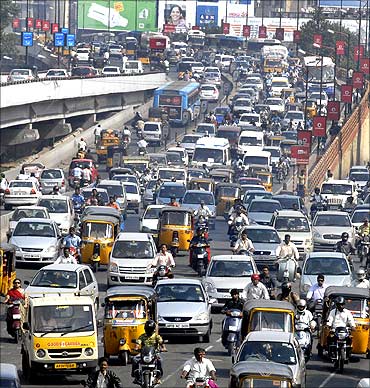
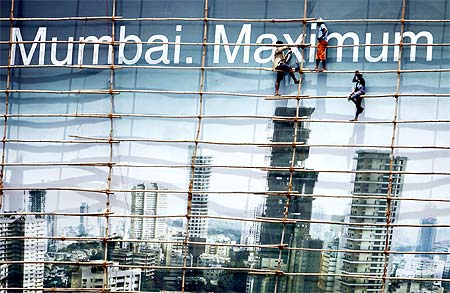

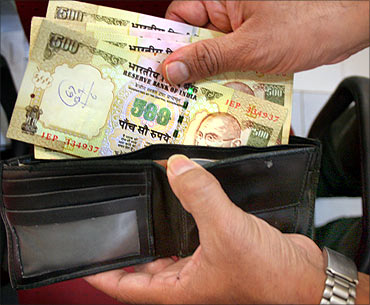
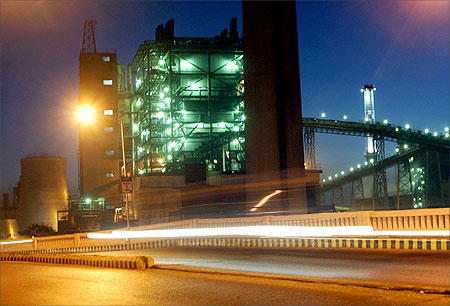
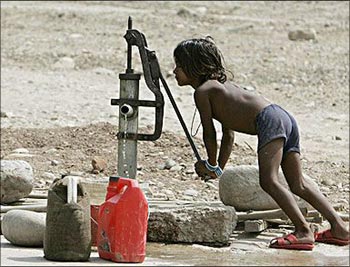
article